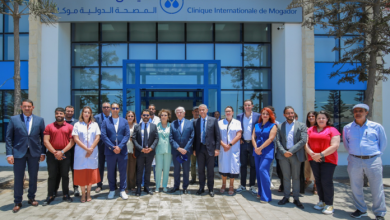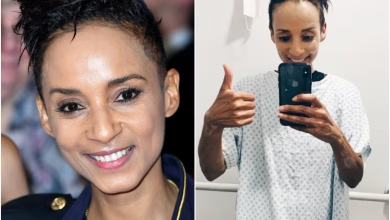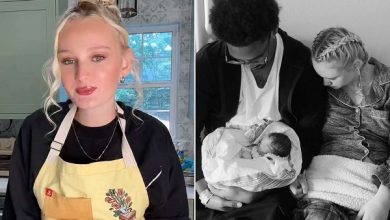Star Ruth Codd Recovers After Facing a Second Leg Amputation Battle

Irish actress and social‑media personality Ruth Codd has recently shared a major life update: she has undergone a second below‑knee amputation and is now in recovery. The 29‑year‑old — who grew to fame through comedic and disability‑awareness content on TikTok and later starred in hit series — revealed the news in her characteristic blend of honesty and humor.
Her openness has touched many, sparking conversations about resilience, disability, and what it means to rebuild life on new terms. Ruth’s journey — from the early injury that started it all, to the life‑changing decisions she made, to what lies ahead in her recovery.
🎬 From TikTok to Netflix: Who Is Ruth Codd
- Originally from Wexford, Ireland, Ruth Codd first rose to public attention during the COVID‑19 lockdowns by posting comedy sketches and disability‑awareness content on TikTok. Her honest, unfiltered style resonated with many — she amassed a large following despite having no formal acting training.
- Her growing popularity led to acting opportunities. She landed her first professional role when horror‑genre creator Mike Flanagan cast her in the Netflix series The Midnight Club.
- She then appeared in the critically acclaimed series The Fall of the House of Usher, showcasing her acting chops and proving that representation of disabled actors in mainstream media is not only valid — but powerful.
- Most recently, she was a contestant on The Celebrity Traitors (2025), where she impressed viewers with her sharp wit and authenticity — even though she was eliminated in the fourth episode.
Her success story has been about more than acting: it’s about showing a different path to fame, one rooted in vulnerability, humor, and real lived experience.
The Injury That Started It All — and a Long Struggle
Teen Football Injury & Chronic Pain
- Ruth’s story of amputation begins with a football injury she sustained at age 15. The injury didn’t heal properly, and over the following years, she underwent numerous surgeries. Despite efforts, the damage and pain persisted.
- As time went on, the repeated surgeries, nerve damage, and chronic pain took a toll, not just physically but mentally. In her own words, she described living through years of hospital visits, limited mobility, and uncertainty.
First Amputation — A Difficult, But Liberating Decision
- At age 23, unable to continue living with the pain and complications, she made the difficult decision to have her right leg amputated below the knee — a move that ultimately offered her a path toward relief.
- While this decision was drastic, it marked a turning point. She has said that after the amputation, life became more manageable; she could finally begin to rebuild rather than constantly chase a healing that may never come.
Eight Years on Crutches — Toll on the Other Leg
- During the years she spent relying on crutches, her mobility shifted dramatically. She has described walking “on tippy toes,” which put enormous strain on her remaining leg and foot.
- In 2021, doctors amputated all her toes to the remaining foot — a sign that the damage was irreversible. She has said that medical professionals told her the foot was “never going to get any better.”
- Over time, the deterioration continued, affecting her ability to work, perform, or even walk without excruciating pain.
The Second Amputation — A New Chapter
Announcement & Heartfelt Honesty
On November 26, 2025, Ruth posted a video on TikTok to inform her followers that she had undergone a second below‑knee (left‑leg) amputation. She delivered the news with characteristic wit and self-awareness:
“Hi guys. So, I have some good news and some bad news.… Good news — we’ve had a full circle moment, I’m back making TikTok content in my parents’ house. Bad news — I can’t do it in front of that lovely blue floral wallpaper anymore, because that room is upstairs. I’ve just had my second below‑knee amputation.”
She also introduced her new wheelchair — humorously nicknamed “Fat Tony” — joking about its painfully slow “top speed.”
Her TikTok caption read: “No legs who dis? #paralympics2026.”
Why the Second Amputation Was Necessary
- The second amputation was not a decision taken lightly. For years, Ruth had struggled with chronic pain and progressive damage to her remaining leg, worsened by years of relying on crutches.
- She has revealed that even with repeated surgeries — and after her toes were removed — mobility and quality of life remained poor. Medical professionals had indicated there was little more that could be done.
- In essence, the second amputation became less of a “loss” and more of a necessary step toward reclaiming her life on her terms — trading chronic pain and instability for the possibility of mobility, comfort, and — importantly — freedom.
Recovery, Reflection, and Resilience
Early Recovery & What’s Next
- In her update, Ruth explained that after the surgery, she would need at least a month for her limb to heal before she could be fitted for prosthetics.
- Despite the seriousness of the operation, her tone remains optimistic and grounded. Her sense of humor — even in hard times — has remained intact. Many fans have rallied around her with messages of support, encouragement, and solidarity.
Representation, Visibility & Importance of Honesty
- Ruth’s journey — from injury to amputation, from TikTok creator to actor — underscores the importance of disability representation in mainstream media. Her visibility as an amputee actress challenges limited stereotypes about who can be a star.
- By openly sharing her struggles and recovery, she offers a real, unvarnished look at what life can be like after amputation: “the good, the bad, and the in‑between.” Her candor helps normalize conversations about disability, making it less taboo, more human.
Fans, Community & Support
Since the announcement, fans and members of the disability community alike have expressed admiration for her courage and resilience. On social media, many have echoed messages like: “We love you, Ruth! Wishing you strength and a smooth recovery.” Others have shared their own experiences of living with disability — reflecting how Ruth’s visibility provides comfort, hope, and a sense of belonging.
In interviews and updates, Ruth herself has admitted that despite the pain and the upheaval, she feels hopeful. She has framed her second amputation not as the end — but as the beginning of a new chapter.
Broader Significance: What Ruth’s Story Means
Disability Representation Matters
Ruth Codd’s journey sheds light on an important truth: people with disabilities are not — and should not be — invisible. Her presence in popular culture as a successful, outspoken actress who happens to be an amputee challenges deeply ingrained biases and promotes acceptance.
Her work — both on social media and on screen — offers representation to millions who do not often see themselves reflected in media, especially in roles beyond tokenism. In doing so, she helps break stigma around disability and shows that limitations on mobility do not equate to limitations on potential.
Mental Health, Identity & Reclaiming Agency
Amputation is not just a physical journey — it’s an emotional and psychological one. By speaking so openly about her decision, her fears, her pain, and her hopes, Ruth gives voice to the complex reality many amputees face. It’s a reminder that making choices about one’s body and health — even profound ones — can be about reclaiming agency.
Moreover, her humor throughout shows resilience not as denial, but as defiance: using laughter to navigate pain, find perspective, and connect with others.
Inspiring Others — Real Life, Real Courage
For many fans, especially those living with disability, chronic pain, or mobility challenges, Ruth’s honesty and strength offers real inspiration. She embodies that even when life changes drastically — even when you “lose a leg” — you can still build a life filled with creativity, purpose, and joy.
Challenges Ahead — And What Fans Should Know
Her journey is far from over. Here are some of the challenges she (and many other double amputees) may face — and why public awareness and support matter:
- Prosthetic journey: After the healing period, fitting and adapting to prosthetics — learning to walk again or re-learn mobility — is a long, often painful process. It requires patience, physical therapy, and mental strength.
- Emotional and mental health: Even for someone as resilient as Ruth, the psychological impact of losing both legs — even voluntarily — can be intense. Feelings of grief, anger, or loss are normal.
- Social stigma and structural barriers: Accessibility remains a challenge worldwide: mobility‑friendly housing, transportation, workplace accommodations — not everyone has them. Public figures like Ruth draw attention to these systemic issues.
- Navigating public life with disability: As a public figure, Ruth’s journey now plays out in front of fans and media. That visibility can be powerful — but also exhausting. Maintaining privacy, boundaries, and self‑care will be essential.
Conclusion: A Story of Strength, Reinvention, and Hope
Ruth Codd’s recent second leg amputation is more than a personal medical update — it’s a testament to resilience, authenticity, and the power of embracing change. What could have been just another hardship has become a new beginning — one defined not by loss, but by the potential for rebirth and reinvention.
Her willingness to share the difficult, messy parts of her journey — the surgeries, the pain, the uncertainty — makes her not only a talented actress or social‑media creator — but a beacon of honesty and hope.
As she begins her recovery, waits for prosthetics, and eventually returns to creating content and acting, many will watch — not with pity, but with hope, admiration, and solidarity. Because Ruth Codd’s story isn’t just hers. It belongs to everyone who has ever had to rebuild, reimagine, and reclaim their life.




